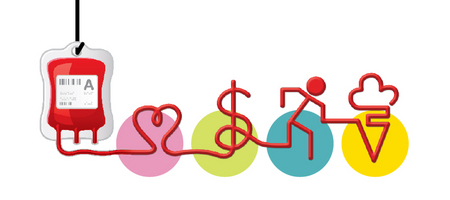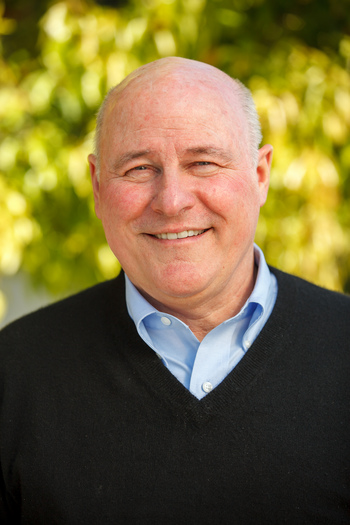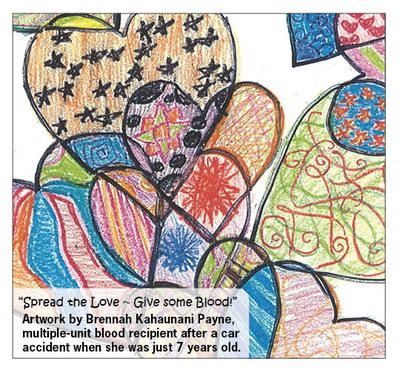December 3, 2012 at 4:26 pm
Published by Stanford Blood Center
By Julie Ruel, Social Media Manager, Stanford Blood Center
When accessing your online donor account, you now have the option of using a username of your choice, rather than your donor ID number. Creating your username is simple and straightforward here's how it works:
November 29, 2012 at 11:59 am
Published by Stanford Blood Center

By Julie Ruel, Social Media Manager, Stanford Blood Center
Menlo Park, the home of such companies as Facebook, SRI International, and Sunset Magazine, is welcoming Stanford Blood Center to their community. On December 10th, the new center, located at 445 Burgess Drive, will be fully operational.
November 20, 2012 at 2:01 pm
Published by Stanford Blood Center
By Dave Emberson, blood recipient
Okay, I will admit to having a bit of a meltdown on a recent Thursday evening when I got the news about having to go the transplant route, but my loving wife got me through it by forcing me to take lots of drugs and go to bed. God bless her.
November 13, 2012 at 10:06 am
Published by Stanford Blood Center

Beth Kanter is the author of Beth's Blog: How Nonprofits Can Use Social Media for Social Change, Visiting Scholar at the David and Lucile Packard Foundation 2009-2013, and internationally recognized speaker and trainer. She is co-author of the highly acclaimed book, The Networked Nonprofit, published by Wiley in 2010, with Allison Fine and the recently published, "Measuring the Networked Nonprofit," with co-author KD Paine.
Beth will be speaking at our next Cafe Scientifique on Thursday, November 15th.
I'm thrilled to announce the publication of my second book, "Measuring the Networked Nonprofit: Using Data to Change the World," with co-author and measurement goddess KD Paine. The book is about how nonprofits can measure and improve results from leveraging their networks. The frameworks and tips we outlined were field tested in real-time as part of my work as Visiting Scholar at the Packard Foundation with 60 of their grantees who participated in a peer learning/focus group and contributed many of the case studies.
October 31, 2012 at 9:40 am
Published by Stanford Blood Center

By Billie Rubin, Hemoglobin's Catabolic Cousin, reporting from the labs of Stanford Blood Center
Vampire bats feed on the blood of other creatures, a hematophagy diet. There are three bat species whose only source of nutrition is blood: the common vampire bat (Desmodus rotundus), the hairy-legged vampire bat (Diphylla ecaudata), and the white-winged vampire bat.
October 24, 2012 at 9:34 am
Published by Stanford Blood Center

By Jennifer Boyer, Staff Writer, American Association of Blood Banks
Blood products and pop culture are an unlikely combination. Yet blood products have found their way into pop culture consciousness in recent years from celebrities publicly supporting blood-related causes to the vampire and zombie crazes. They are even impacting lifestyle choices such as diet, exercise and dating.
October 9, 2012 at 11:27 am
Published by Stanford Blood Center

By Tim Donald, Contributing Writer, American Association of Blood Banks
Roxanne and Mark decide to donate blood. While they are sitting together in an open waiting room, a nurse asks Roxanne questions about her sexual history and number of partners loud enough for all to hear. They are told their blood will be tested to see whether it is "clean" enough to be used. They spend a sitcom eternity waiting anxiously for the results to learn whether they have any sexually transmitted diseases, or STDs. In the end, someone from the clinic calls each partner to tell them that they do not have STDs. (Source: Whitney, Season 1, Episode 12, "Faking It")
October 2, 2012 at 11:33 am
Published by Stanford Blood Center
By Billie Rubin, Hemoglobin's Catabolic Cousin, reporting from the labs of Stanford Blood Center
The term "buffy coat" might make you think of a shiny car wax, but in the world of blood banking, buffy coat refers to the white layer between red blood cells and plasma in a unit of whole blood after it has been spun down in a centrifuge. The buffy coat contains white blood cells, the soldiers of the immune system.
September 25, 2012 at 9:24 am
Published by Stanford Blood Center

By Scott Johnson, president and founder of the Myelin Repair Foundation. Listen to Mr. Johnson speak live on this topic at our next Cafe Scientifique series on Thursday, September 27, 2012 at 7 p.m.
Just like millions around the world and perhaps many of you, I am a patient. I was diagnosed with multiple sclerosis over 30 years ago. At that time, I was told there would be a cure in 30 years. If I were diagnosed today, I would be told the same thing.
September 21, 2012 at 9:49 am
Published by Stanford Blood Center

By Billie Rubin, Hemoglobin's Catabolic Cousin, reporting from the labs of Stanford Blood Center
It looks like our O+, O-, A+, and A- RBCs are going out to our hospitals at blinding speeds these days. When many of these blood types are at or near the critical levels in our inventory, everyone's work here at SBC is cut out for them. Finding and scheduling donors, setting up mobile blood drives, drawing the blood, testing it in the lab and processing it for transfusion has our little hands working as fast as they can go.







